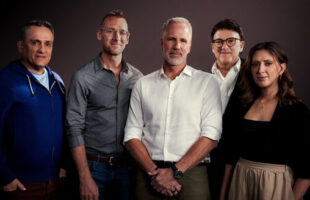The payload module of MetOp-C, developed and built by Airbus in Germany, was delivered to Toulouse after it completed a series of tests at ESTEC, the technical centre of the European Space Agency (ESA) in Noordwijk, the Netherlands. The satellite, weighing in at four tonnes, is now almost complete after successful coupling of its payload and service module. In preparation for the launch scheduled for October 2018 from Kourou, French Guiana, MetOp-C will undergo a further series of radio-electric tests in the coming weeks. The solar panel, which is the last outstanding major component, will be integrated in November 2017 just before vibration testing.
The MetOp satellites have been developed by Airbus for ESA and EUMETSAT, the European Organisation for the Exploitation of Meteorological Satellites, and are part of a joint European-US cooperation. EUMETSAT is responsible for operating the satellites. MetOp-A, the first satellite in the series, was launched in October 2006 and has since doubled its specified five-year service life. MetOp-B was launched into orbit in 2012 and is also about to exceed its design service life. Initially, the plan was that each satellite would replace its predecessor, however, the excellent performance of the first two MetOp satellites means that they can now be operated simultaneously, providing the meteorological community with increased data. The forthcoming launch of MetOp-C will further improve the quality of observations and data provided for weather forecasts.
Each MetOp satellite carries a total of 12 instruments, making the system extremely versatile. The microwave humidity sounder, built by Airbus, delivers data on water vapour near the Earth’s surface and is part of the collaboration with the US. As well as each MetOp satellite carrying the instrument, two more are flying on US NOAA satellites, delivering matching data from a different orbit to enhance weather models. MetOp also measures ocean surface winds, observes sea ice distribution and monitors the ozone layer in the stratosphere, as well as relaying meteorological measurements collected by boats, buoys and research stations. It also includes a receiver to relay signals sent by persons in distress.







